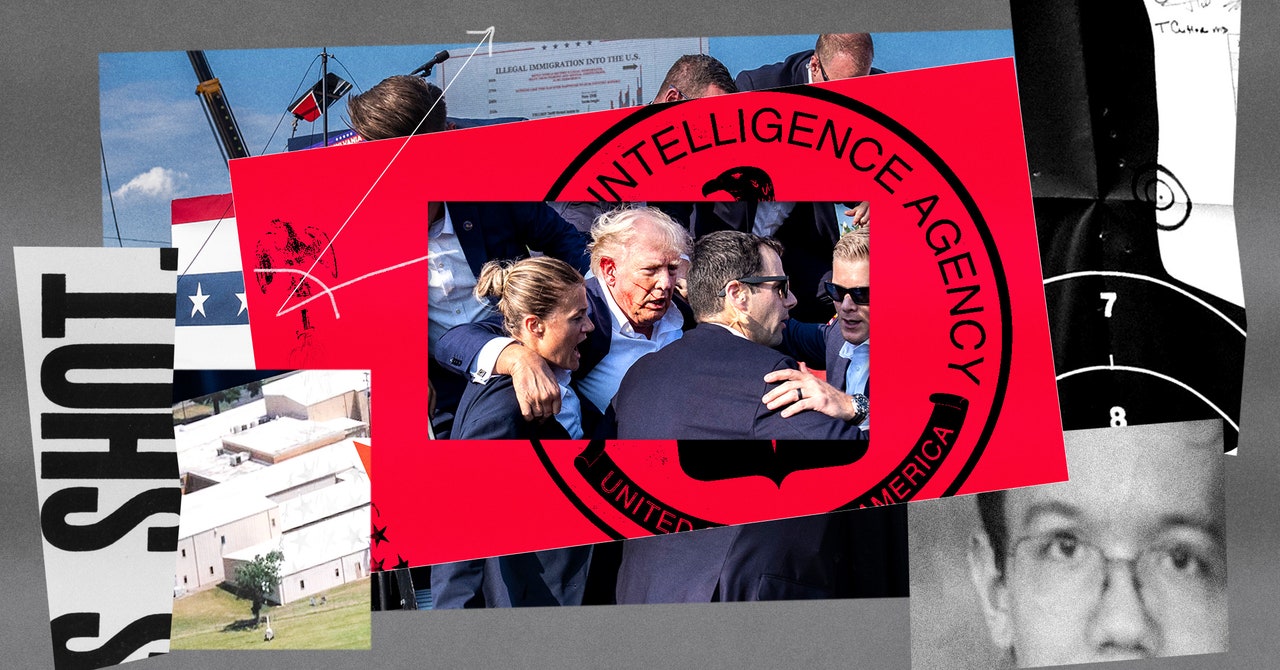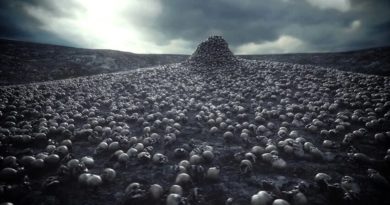The Thomas Crooks Conspiracy Theories Aren’t Going Anywhere

A would-be presidential assassin with no clear motive, shot dead at the scene; accounts from witnesses who’d warned police to no avail; video taken from a bewildering variety of angles. Minutes after Thomas Crooks came within an inch of killing Donald Trump, it was already clear what would happen next, and in the subsequent days a number of conspiracy theories indeed emerged, each more baroque than the last.
Tracing just one shows how easily and rapidly they proliferate. Famed hedge fund manager Bill Ackman wrote in a since-deleted X post, for example, that an anti-vaccine influencer’s video purporting to show that there were two shooters made “a powerful case.” Another anti-vaccine influencer, meanwhile, produced a chart tracing the paths of bullets from four shooters, and a third, affiliated with Alex Jones, asserted that his audio analysis showed there were three. (None offered a compelling explanation of how an entire team of assassins botched the job.)
While there’s no consensus among popular conspiracists on how many shooters there were and whether law enforcement agencies on the scene passively allowed or actively abetted the crime, they do seem to broadly agree it was an inside job carried out at the behest of the deep state. (The FBI says its ongoing investigation has turned up no reason to think Crooks had accomplices.) Who the specific culprits are supposed to be remains unclear. The Heritage Foundation, the think tank currently best known for its role in coordinating Project 2025, used cell phone location data to intimate the FBI was involved, while everyone from QAnon influencers to Ackman has invoked fictional CIA assassin Jason Bourne when not pointing the finger at the actual, real-life CIA. (“These claims are utterly false, absurd, and damaging,” a CIA spokesperson tells WIRED. “The CIA had no relationship whatsoever with Thomas Crooks.”)
It seems clear that we’re witnessing the birth of new and durable conspiratorial prism to put on the shelf alongside the moon landing and the assassination of JFK. The question, especially given the evident interest of powerful figures and institutions like Ackman and Heritage, is whether that much matters.
“People adopt ideas that match the ways that they already view the world. And there are people out there who view the world through a lens in which events and circumstances are dictated by powerful, shadowy groups who work in secret,” says Joseph Uscinski, a political scientist at the University of Miami who studies conspiracy theories. “It’s not so much the theories themselves that attract people; it’s that people, because of what they already believe about the world, are attracted to certain ideas.”
Beliefs about the secret doings of powerful elites aren’t necessarily unfounded. Ackman, for instance—who did not reply to a request for comment—was reportedly part of a network of rich people who coordinated via a secret WhatsApp chat to influence public opinion on the war between Israel and Hamas; after, Ackman says, he stopped participating, members privately pressed New York mayor Eric Adams to crack down on peaceful student protests.
As Jefferson Morley, who’s published several books about the CIA and written extensively about the JFK assassination, notes, if people believe that the government is capable of concealing facts about an attempt on the life of a US president, that’s probably because it’s demonstrably done so and is actively doing so. Similarly, if people believe that the CIA is capable of creating brainwashed assassins, that’s in part because of its very real history of interest in exactly this. The notorious MKUltra wasn’t just the inspiration for everything from the Bourne movies to Stranger Things, but an actual program of research into mind control—especially replacing true memories with false ones—about which historians and researchers still have many unanswered questions, largely because files related to the program were destroyed in the early 1970s.
“You can’t unring the MKUltra bell,” says Morley. “People know about it. A lot of people know about it. So to say, ‘Oh, that’s irrational conspiracy,’ which is the attitude that we get from the mainstream press—’Oh, you know, how dare anybody question the CIA’s account of that?’— I mean, it just doesn’t ring true to most people, because most people know it’s not true.”
The social memory of the political murders of the 1960s, and of the government in some cases at the least withholding information about them, certainly informs the public’s understanding of events today. It thus informs collective sense-making, to use the term employed by researchers at the University of Washington’s Center for an Informed Public.
Two days after the July 13 attempt on Trump’s life, the researchers published an analysis outlining the process by which groups were making sense of the crisis in real time by gathering evidence and interpreting it through a frame, and how this was playing and had already played out. In the immediate aftermath of the shooting, they identified three politically coded frames: one suggesting that the shooting was staged, one focused on the Secret Service’s failures, and one suggesting the shooting was an inside job. The first seems to have fallen apart due to the evident reality of the shooting, including the death of Corey Comperatore and the serious injuries suffered by two other Trump rally attendees; the second, given the manifest failures that led to the resignation of the Secret Service’s director, seems broadly sound. The third seems likely to linger.
“Every time there’s a school shooting, my book sales go up,” says Tom O’Neill, the author of Chaos, which among other things draws intriguing though ultimately inconclusive connections between Charles Manson and MKUltra. O’Neill happened to be watching the rally at which Crooks tried to shoot Trump, and his first thought, he says, was, “Well, there go my book sales again. They’re going to skyrocket, because people really want to believe that there’s no such thing as a lone assassin.”
O’Neill says he’s often asked whether he believes the MKUltra program still exists, and that he can only say that while he wouldn’t be surprised, he has no idea, because nearly all the relevant records were destroyed and because, in his view, transparency is almost beside the point. “They’re not going to release any of their secrets. That’s why they’re the CIA,” he says. “And if they release something, you should be suspicious of what they release.”
(“Regarding MKULTRA, the CIA’s program was shut down more than 40 years ago,” the CIA spokesperson says, “and declassified information about the program is publicly available on CIA.gov.”)
Morley, the JFK assassination expert, is less dour; he believes that the government and law enforcement can address conspiracy theorizing and, more generally, a lack of trust in their judgment by ending practices of official secrecy. “Our system defaults to secrecy,” he says. “It’s a very powerful impulse. And it’s a tool of power, and people are unwilling to give it up. I think the cynicism and conspiracy theories that we see now, it’s a real challenge to them. It shows the price that we pay for that. It’s a very vivid, concrete demonstration of the price we pay for this secrecy. And hopefully, people in positions of responsibility will learn.”
For his part, Uscinski, the political scientist who studies conspiracy theories, doesn’t think people need to worry too much about what the public believes. That social media makes it easier than it was in the past to observe and study the spread of conspiracy theories doesn’t, he says, necessarily mean they’re more prevalent or more persuasive, but simply that they’re easier to observe. As he points out, academics and reporters who study these theories don’t find them convincing despite prolonged exposure, and neither do most people. The real issue, he says, is that some powerful people do find them convincing, which means they match how these people view the world and thus offer insights into how they exercise power.
“Major leaders in our politics and people who have big followings in the media say a lot of conspiracy theories,” he says, “and that’s the problem—we wind up giving political power to people who espouse these ideas, and that’s very dangerous. If we’re going to focus on anything, it shouldn’t be, ‘Oh my God, some guy in Timbuktu said something on Twitter.’ It should be, ‘Fucking Trump is saying this shit.’ He’s our conspiracist-in-chief.”


